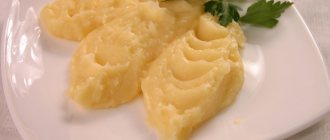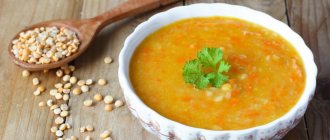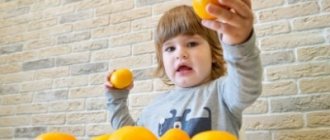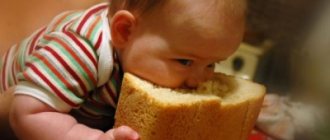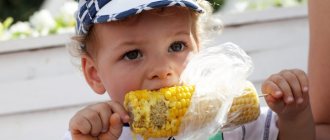It’s better not to make cutlets as onions spoil the meat when frozen... make minced balls and cook them together with vegetables... ps... I steamed everything at once.
Well, at least an hour, then into the blender. I prepared it as a puree, with carrots and pumpkin.
I’ve been cooking for half an hour now, I cut it into small pieces, then I’ll add it to the vegetables and cook some more)
Why do you need these jars, it’s not clear what’s in there. I twist everything and cook it with meatballs, it’s very convenient and fast.
Yes, we still have a full refrigerator, it’s frost time... and then I’ll make minced meat, I’ve already thought about it))) let him chew the cutlets)))
I made room for them to freeze, and then poured them into a bag and that was it. Places are the same as for pulp. Our place is also a bit packed.
I want to make them into cutlets, onions, carrots, eggs and bread)))
Buy cans) the beef is actually boiled for 3 hours and in 2 waters. Hemos is a carriage, so we only have cans of complementary meat; I cooked chicken later, but it didn’t last long
In cans it costs 750 rubles per kg, and pure beef costs 350 rubles.
Add electricity, cook for 3 hours every 100 grams, then that’s what it’ll do, you’ll just end up with hemorrhoids, economists)))
Do you trust doctors and their prescriptions?
Yes
20.08%
No
13.93%
I trust, but I check all medications for reviews on the Internet from people who have already tried them and only then do I start taking them.
47.95%
Yes, but only to appointments and doctors from paid clinics.
18.03%
Voted: 244
I’ll follow the advice and make minced meat for 15 minutes + 15 minutes for cooking vegetables, and that’s a pure product, not rice flour!
It will also weigh less when cooked. It seems to me that you can start with cans, especially a little at a time at first, and then you’ll understand the consistency and cook it yourself
Why isn’t rice kosher?))) the most vegan eco-product
Maybe it’s normal for a vegan family to pay through the nose for rice flour)
If only we had a place to freeze these meatballs... we’re not the only ones living simply
until ready. if you cook for an hour and a half, it’s sawdust, not meat
So I’m thinking, how do you know when it’s ready? We just don’t eat meat.
Beef is tough meat, it needs to be cooked for at least an hour to become soft)
You take out a piece and pierce it with a fork. if you press, the same broth should flow out of the punctures, without the pink. if you cut it, the cut is gray
until ready. if you cook for an hour and a half, it’s sawdust, not meat
To cook beef we need:
- A piece of beef (ideally 500 grams);
- Water;
- Onion - 1 head;
- Spices: bay leaf, salt, peppercorns, you can take dill, celery root and garlic.
How to cook beef in a saucepan:
Take a piece of meat. If the selected piece is frozen, defrost it first. We remove the bones, tendons, remove the films, and rinse the cut meat well under the tap.
We take a pan slightly larger than the piece of meat itself. This method allows you to cook the beef in a small amount of water, resulting in tender meat. Boil water in advance, and then pour boiling water over the beef so that the water covers the meat approximately 1 centimeter above.
Place the pan on medium heat and cover it with a lid. As soon as a slight boil begins, remove the lid and remove the foam so that the broth does not become cloudy.
As soon as the water boils, add a teaspoon of salt to the broth and reduce the heat. We close the lid again, but be sure to make sure that the meat does not peek out on the surface. If necessary, add boiling water.
The amount of time to cook beef depends on its size and level of tenderness. To determine whether the meat is ready, you can pierce it with a knife; if the knife goes in and out well, then the meat is ready. We will look at cooking time in more detail later in the article.
Half an hour before our piece of meat is ready, you can throw a peeled onion, bay leaf, and peppercorns into the broth.
Once ready, do not rush to immediately remove the meat from the broth; leave it there for 15 minutes.
Next, take out our boiled beef, cut it and serve with any side dish.
We have just looked at how to cook beef in a saucepan, now we are wondering how long to cook beef in a saucepan. All answers are below in the text.
How to choose the right veal meat?
- The first grade is fillet, back, brisket. This meat cooks quickly.
- The second grade is shoulder blade and shoulder. It has no tendons and also does not take long to cook.
- Third grade. This includes the shin. Ideally, it should be cooked for several hours. Meat on the bones. This type is recommended for preparing a delicious, aromatic soup. It can be cooked in a short time.
Features of cooking veal so that it is soft
As noted above, the meat of a young animal contains less fat. This product is more difficult to prepare. We will need more time and special conditions.
- Before cooking, the veal must be cut across the grain. As a result, it will perfectly preserve the juice.
- Place the veal in boiling water. Only under this condition will the meat be soft.
- If you are boiling veal for soup, then cook the meat as a whole piece. Do not forget to pierce the piece with a knife or fork an hour after boiling. In this way you can find out if the product is ready. A sharp object that easily penetrates the pulp signals that the veal is ready.
- Do not cook veal meat over high heat! Otherwise, the broth will quickly boil away.
- You need to pour out the first broth after about 45 minutes. The second cooking should be shorter - 20 or 25 minutes.
- Do not cover the cooking vessel unless you have removed all the foam.
- The veal should be salted 15 minutes before the end of cooking to prevent the meat from becoming tough.
- It is not recommended to remove cooked meat from the broth immediately. Let it sit for another 20 minutes after switching off.
Preparing a meal for a child is both a difficult and simple task for a mother. On the one hand, you don’t need to add anything extra to somehow enhance the taste; slightly under-salted food will be more of a plus than a minus. On the other hand, it is important to prepare food correctly so as not to lose the beneficial value of the products, because we are talking about a growing organism, for which each microelement plays a special role in physical and mental development. A special place in the nutritional values for baby food is occupied by meat products containing a rich amount of natural animal protein necessary for full growth and development.
Among the recommended types of meat for consumption by children as food, you can choose rabbit, poultry, lean pork, and beef occupies a special place. As for veal, young mothers still often think about the question: which meat is better to choose for cooking: mature or young?
Borscht is the head of the dinner table
This first dish is prepared with pleasure by hundreds of homemakers. Of course, each has its own time-tested recipe, but we invite you to expand your culinary horizons. Try cooking borscht with veal, adding some beans. No one can resist such a dish of Slavic cuisine.
Ingredients:
- veal tenderloin on the bone – 400-500 g;
- onion - one head;
- canned red beans - one can;
- potatoes – 7-8 tubers;
- white cabbage – 100-200 g;
- carrots - one root vegetable;
- beets - one root vegetable;
- tomatoes in their own juice;
- salt, ground allspice;
- garlic - a couple of cloves.
Preparation:
- You already know how to properly cook veal broth. If necessary, defrost a piece of meat, but only by natural thawing.
- Before cooking, wash the veal. Pour filtered water over the veal and bring the liquid to a boil.
- Then remove the foam, reduce the heat and continue to simmer the veal until cooked for 1.5 hours. After cooking, take out the meat piece, cool it and cut it into fibers. And at the very end we add it to the borscht.
- Chop the onion into thin half rings. Grate the carrot root vegetable.
- Heat refined vegetable oil in a frying pan and sauté vegetables.
- Next, add chopped tomatoes, canned in their own juice, to the fried vegetables. If you prefer to add tomato paste or a special borscht dressing, use these ingredients.
- Add the dressing to the broth, and meanwhile chop the cabbage.
- Place the cabbage in the broth and continue to simmer over low heat.
- Peel the potato tubers, wash them, cut them into small cubes.
- Place the potatoes in a saucepan with the broth and mix well with the other ingredients.
- In the meantime, we clean, rinse and dry the raw beets. Shred the root vegetable on a grater and sauté. To prevent the beets from losing their rich hue, add a few drops of freshly squeezed lemon juice.
- All that remains is to add the red beans along with the beets. Don't forget to drain the juice from the beans.
- Mix all the ingredients and continue cooking the borscht until the potatoes are ready. At the same stage, you can add chopped boiled veal.
- A few minutes before it’s ready, add crushed garlic, salt and ground allspice.
- To make the borscht even more aromatic and tasty, add some fresh herbs to the plate.
Veal or beef for a child - which is better?
First of all, you should understand what each of the presented meat varieties is: what are their similarities, differences, and what is preferable.
First of all, it should be understood that veal and beef are the same meat variety, only in the first case we are talking about a product obtained from young calves, and in the second - from mature individuals. In fact, veal is the same as beef, it also contains cow protein, and if there are contraindications to its consumption, then this meat should not be considered for a child’s diet.
From a nutritional standpoint, veal actually contains the same set of nutrients as beef:
In what cases may veal consumption be limited or contraindicated?
Veal is a meat with a complex protein structure, and not every baby is able to fully digest it immediately; moreover, its depths contain a large amount of purines, which are later transformed into uric acid during digestion, which limits the consumption of the product for certain diseases:
• In case of exudative diathesis, postpone veal complementary foods to a later date (from one year onwards).
• If a child is allergic to veal (in this case, this most often means cow protein) - a complete ban on consumption.
• In case of celiac disease - whether children can eat veal in this case should be checked with the specialist observing the child, due to the fact that cows and calves are often fed cereals - components of their compounds may be present in the meat.
• For kidney diseases associated with impaired uric acid metabolism, it is not advisable to consume in large quantities.
• For diabetes - limited consumption, with control of blood sugar levels.
How long to cook veal for a child?
Many people wonder how much and how to cook veal for a child. There are no particularly fundamental rules for cooking, but, nevertheless, despite the fact that this is young meat, cooking is still quite long and depends on how and in what way the dish is planned to be prepared.
How long does it take to cook veal for a child and an adult, taking into account different cooking devices?
• Regular cooking – 55 – 70 minutes over medium heat after boiling.
• Multicooker – 55 – 60 minutes in normal mode.
• A double boiler requires a slightly longer amount of time - 60 - 70 minutes over regular heat.
Veal for babies is cooked a little longer than usual. This is important for better softening of meat and for antiseptic purposes. However, you shouldn’t delay cooking too much. You can determine how much to cook veal for an infant and a baby who has barely reached the age of one by looking at the degree of readiness of the meat product itself. Usually, on average, no more than 5 minutes are added to cooking.
IELTS Speaking Topic: Cooking - TED IELTS
In previous lessons we learned how to talk about food for IELTS. Food is one of those rather predictable IELTS topics that often comes up in the first part of the speaking exam. You usually see it in the first part, but it can also appear in the second or third parts. I also saw food in the reading test and even in Writing Assignment 2. However, today we are going beyond the general topic of food and will look more specifically at cooking. Food will test your vocabulary in terms of nouns and adjectives, but cooking includes a range of verbs as well as some new nouns. Let's look at what you need to know to talk about cooking for the IELTS test.
Dictionary
Firstly, you will want to create a good IELTS culinary vocabulary. Luckily, I have made a handy PPT to help you learn. You can click the link below and download it to make the most of it. You'll see a picture (sometimes a moving GIF) and be able to guess the word. When you right click, it will prompt you with a dictionary and give you a definition.
You should learn these words in context by looking for examples online. Try watching cooking shows on YouTube to get some practice, and pay attention to how the speaker explains what he or she is doing.
Questions
Part one
In this section you will be asked a few short questions. You should try to answer in a few sentences. Don't try to talk for too long. I'll give you some example answers below:
What things can you cook?
- I can cook many dishes, including desserts and savory dishes. Although I mostly cook pasta or rice.
Do you like to cook?
- To be honest, no, I don't really like to cook. I find it a chore and I get tired of preparing food every day.
How often do you cook?
- I cook three meals a day because where I live it's just too expensive to go out to eat and I don't have anyone to cook for me.
What dish do you cook best?
- I'm probably the best vegetarian cook because I grew up in a vegetarian family, but I'm not a vegetarian myself and I know how to make decent fried chicken.
Does anyone in your family like to cook?
- Yes, my dad loves to cook. He doesn't work on weekends, so you can often find him in the kitchen experimenting with a recipe he saw on the Internet.
Can your parents cook?
- Both my parents are good cooks. They take turns preparing dinner for the family.
Do you think it is important to be able to cook well?
- I believe that this is a really important life skill that children should learn at an early age. Knowing how to cook allows you to live a healthy lifestyle without relying on junk food and other snacks.
Who is the best cook you know?
- I have a friend who works as a chef in a fancy restaurant. She is probably the best cook I know because she is professionally trained.
What kind of cooking experience have you had?
- I learned to cook when I was about ten years old. My mother taught me and we often baked together in the kitchen after school. Currently, I still love to cook and bake.
Who taught you to cook?
- Everyone in my family knows how to cook, and we all learned from our parents. During the school holidays we would get together and cook big lunches where everyone would cook something, so I learned how to do it.
As a child, did you ever help your parents prepare food?
- Oh yes, we had to take part. In my house you had to do chores and help in many ways. It wasn't a choice! But it was fun and I really look back on those times fondly.
How good of a cook are you?
- I think it's good, but I can never become a professional chef. I can do a lot of simple things and they taste good, but I'm far from an expert.
Part two
Here is a hint from IELTS Part 2 on Cooking:
Describe someone you know who is a good cook.
.
Veal recipes for children
Veal for children can be prepared in different ways, but some features should be taken into account:
1) You should always use only freshly purchased meat; during the freezing process, meat loses a lot of nutrients, but harmful fatty acids are retained.
2) Veal is given to a child under one year old in the most minced state, since it is difficult to chew meat, and the baby’s jaw apparatus is just beginning to develop.
3) Veal for a one-year-old child may already contain small fragments, but the individual developmental characteristics of the baby should be assessed - some have less than 6 teeth by the age of one year, while others have 8 or more teeth.
Veal cutlets for children
The most optimal form of meat dish, preferred by most children, is cutlet. Read below how to prepare veal cutlets for children of any age:
• Veal 90 – 100 gr.
• Bread or crushed crackers – 20 gr.
• You can add a little dill and add a little salt.
Boil the veal, then grind it using a meat grinder and mix it with egg white and pre-crushed white bread. If eggs have not been introduced before, then it is better not to add them. Form the mixture into shapes (cutlets). Lightly fry the resulting cutlets in sunflower oil or simmer in a saucepan. Before serving to your child, chop or break into small pieces.
Foods not to give to infants and young children
Salt
Babies should not eat a lot of salt as it is harmful to their kidneys.
Do not add salt to baby food or cooking water, and do not use bouillon cubes or gravy as they often contain high levels of salt.
Keep this in mind when cooking for your family if you plan to serve the same food to your child.
Avoid salty foods, such as:
- bacon
- sausages
- chips with added salt
- crackers
- chips
- ready meals
- takeaway
Sugar
Your baby doesn't need sugar.
Avoiding sugary snacks and drinks (including fruit juices and other fruit drinks) will help prevent tooth decay.
Saturated fats
Avoid giving your child too many foods high in saturated fat, such as chips, cookies and cakes.
Checking food labels can help you choose foods that are low in saturated fat.
See food labels for additional information.
Honey
Sometimes honey contains bacteria that can produce toxins in the baby's intestines, leading to infant botulism, which is a very serious disease.
Do not give your baby honey until he or she is 1 year old. Honey is a sugar, so avoiding it will also help prevent tooth decay.
Whole nuts and peanuts
Whole nuts and peanuts should not be given to children under 5 years of age as they may pose a choking hazard.
You can give your baby nuts and peanuts from about 6 months of age as long as they are crushed, crushed, or in the form of a smooth nut or peanut butter.
If you have a family history of food or other allergies, talk to your doctor or health care provider before introducing nuts and peanuts.
Learn more about food allergies in infants and young children.
Some cheeses
Cheese can be part of a healthy and balanced diet for babies and young children and contains calcium, protein and vitamins.
Pasteurized full-fat cheese can be eaten by infants from 6 months of age. This includes hard cheeses such as soft cheddar, cottage cheese and cream cheese.
Infants and young children should not eat soft, mold-ripened cheeses such as Brie or Camembert, as well as ripened goat's milk cheese and soft blue-veined cheese such as Roquefort, as there is a higher risk that these cheeses may carry bacteria. called listeria.
Many cheeses are made from unpasteurized milk. They are best avoided due to the risk of listeria.
You can check the labels on cheeses to make sure they are made from pasteurized milk.
But these cheeses can be used as part of a recipe, since the listeria is killed during the cooking process. For example, baked brie is a safer option.
Raw and lightly boiled eggs
Eggs can appear in babies from about 6 months.
If the eggs are chicken eggs and have a red lion printed on them, or you see a red lion with "British Lion Quality" on the box, your child can eat the eggs raw (eg in homemade mayonnaise) or lightly cooked.
Chicken eggs that do not have the red lion mark should be boiled until the white and yolk are firm. This is how duck, goose or quail eggs should be.
Avoid raw eggs, including raw brownie mixes, homemade ice cream, homemade mayonnaise, or desserts containing raw eggs that you cannot confirm are marked with the red lion's seal.
Rice drinks
Children under 5 years of age should not drink rice drinks as a substitute for breast milk or infant formula (or cow's milk after 1 year of age) because they may contain too much arsenic.
Arsenic occurs naturally in the environment and can end up in our food and water.
Rice tends to absorb more arsenic than other grains, but that doesn't mean you or your child can't eat rice.
The EU allows maximum levels of inorganic arsenic in rice and rice products, and even stricter levels are set for products intended for young children.
Don't worry if your child has already eaten rice drinks. There is no immediate risk for them, but it is better to switch to a different type of milk.
Learn more about arsenic in rice
Raw jelly cubes
Raw jelly cubes can be a choking hazard for infants and small children.
If you are making jelly from raw jelly cubes, be sure to follow the manufacturer's instructions.
Raw shellfish
Raw or lightly cooked shellfish such as mussels, clams and oysters may increase the risk of food poisoning, so it is best not to give them to infants.
Shark, swordfish and marlin
Do not give your baby shark, swordfish or marlin. The amount of mercury in these fish can affect the development of the baby's nervous system.
Additional Information
Page last reviewed: November 15, 2021 Next review due: November 15, 2021
.
